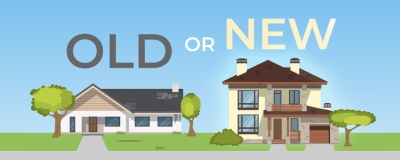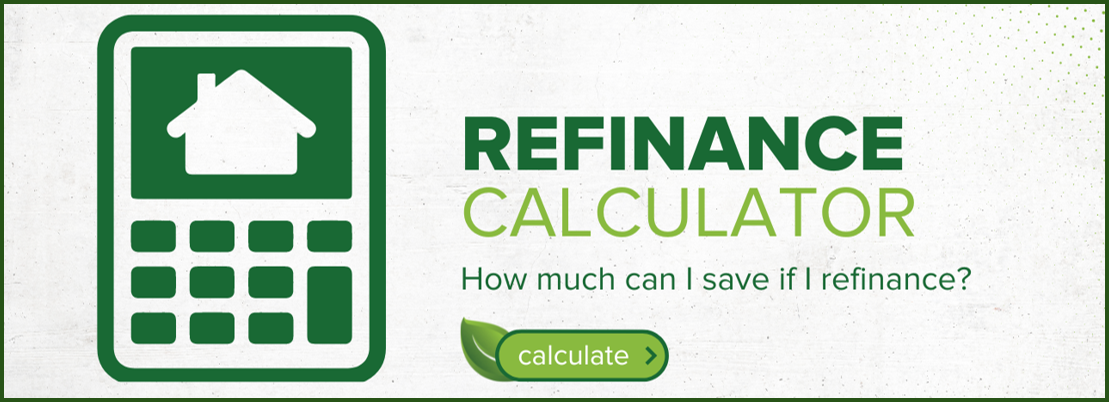

We're not taking you back to high school.
When it comes to your mortgage, qualification ratios may seem like something from your high school calculus class. It's actually not rocket science. The math is simple, and the concept is sound.
What is Income Ratio?
Income Ratio is your total monthly housing payment as a percentage of your gross monthly income. Your total housing payment consists of principal, interest, property taxes, hazard insurance, mortgage insurance (if applicable) and any condo/co-op or association fees.
What is Debt Ratio?
Debt Ratio is your total monthly housing payment plus any recurring monthly debts as a percentage of your gross monthly income. Other debts include all other payments such as cars, credit cards, student loans, personal loans, retirement savings loans, etc.
How High Can They Go?
It varies by loan program and other factors, but the approximate range for your debt ratio is from about 33% to 43%.
Example: If your total gross income is $5,000 per month, your total housing payment plus recurring debt payments should not exceed approximately $2,150 for a 43% ratio or $1,650 for 33% ratio.
What's Right for Me?
Truth is, everyone is different. Some people are comfortable using a higher percentage of their income, and others are not. Family size, other expenses and lifestyle can all have an impact.
Have Questions? Contact The Greenway Team
We're happy to take the time to go through the numbers with you. Together, we can help determine a comfortable payment and corresponding purchase price.
Reach out today. 888-616-9885.

When people think about refinancing, they often focus on lowering their mortgage interest rate. But what if the opportunity to lower your interest rate applied to your consumer debt rather than your mortgage?
While it’s natural to be hesitant about altering a low mortgage rate you currently enjoy, consider this: credit card rates have surged, averaging 22.76% as of May 2024.* This increase in rates can make managing consumer debt a financial burden, even if your mortgage rate remains low.
Here’s where refinancing can offer significant benefits. If you have substantial consumer debt and sufficient home equity, refinancing your mortgage to a higher, yet still lower-than-credit-card rate, might be a smart move. By consolidating your consumer debt into your mortgage, you can shift from high double-digit interest rates to a more manageable single-digit mortgage rate.
Why Consider Refinancing for Debt Consolidation?
-
Lower Interest Rates: Even if the new mortgage rate is higher than your current rate, it will likely be much lower than the rates on credit cards and other consumer debts. This can lead to substantial savings on interest payments.
-
Monthly Savings: Consolidating high-interest debt into a mortgage with a lower rate can reduce your monthly payments significantly. This can translate into hundreds of dollars saved each month and thousands saved annually.
-
Tax Benefits: Mortgage interest may be tax-deductible, potentially enhancing your savings. Always consult with a tax professional to understand how this might apply to your specific situation.
-
Increased Financial Flexibility: With lower monthly payments, you can free up cash to allocate towards other financial goals, such as paying down your mortgage faster, investing in your retirement, contributing to a college savings plan, or other important expenses.
Is This Right for You?
Debt consolidation through refinancing isn’t a one-size-fits-all solution. It’s important to assess your overall financial situation, including the amount of debt you have, your home equity, and your long-term financial goals. While this strategy can offer significant savings, it’s crucial to weigh the pros and cons and consider how it fits into your broader financial plan.
Ready to Explore Your Options?
If you’re curious about whether debt consolidation could benefit you, don’t hesitate to reach out. The team at Greenway Mortgage is here to help you understand your options and guide you through the refinancing process to ensure it aligns with your financial goals.
888-616-9885
*Federal Reserve Board

An old rule of thumb suggested you would need a 1% rate drop to make refinancing worthwhile. This adage was from a time when average loan amounts were far smaller. However, in today's market, even a smaller decrease in your interest rate can lead to significant savings over the life of your loan.
To determine if refinancing will save you money, look at the following 3 factors:
-
How much will it cost? Refinancing isn't free—there are closing costs, fees, and possibly other charges involved. These costs can vary depending on the size of your loan and the terms of the refinance. It’s essential to know exactly how much it will cost you to complete the process.
-
How much will I save in interest each month? The primary reason most people refinance is to save on monthly interest payments. By securing a lower interest rate, you reduce the amount of interest you pay each month, freeing up more of your income for other uses.
-
How long do I plan to keep the loan? How long do you plan to stay in your home or keep the loan? This is crucial because it determines whether the savings from refinancing will outweigh the costs.
Refinance Break-Even Point Example:
Divide the cost to refinance by the monthly savings to determine your “break-even point.” For example, $4,000 cost divided by $200 per month savings = 20 months to recover your costs.
In this example, if you plan to stay in your home for several years, refinancing could save you thousands. In fact, you would save $2,400 every year you lived in your home past 20 months.
You can also maximize your benefits by applying some of those savings toward your principal. Even as little as $100 extra each month can help cut years off your loan term and significantly reduce the total interest paid.
Is Refinancing a Smart Move for You?
Refinancing can be a powerful financial tool, but it's important to ensure it aligns with your long-term goals. Are you wondering if a refinance makes sense for your specific situation? Perhaps you’re curious about how much you could lower your monthly payments, reduce the overall interest paid, or even shorten the term of your loan. Understanding your potential savings and the time it will take to break even on the costs of refinancing is key.
If you’d like to explore your options and determine the best course of action, reach out—we're happy to help.
Give us a call at 888-616-9885 for personalized advice and guidance or contact us here.
You can also use our Refinance Calculator to quickly see how much you could be saving with a lower interest rate. Click here to use our Refinance Calculator.

As we find ourselves in the heart of February 2024, the housing market presents a landscape filled with promising developments. Here are four compelling reasons to feel optimistic about the current state of affairs:
#1 Favorable Mortgage Rates
The trajectory of mortgage rates has taken a promising turn since last fall. After hitting highs, rates have descended, making homeownership more accessible for many. The Federal Reserve Board's projection of potential rate cuts further underscores this positive trend, provided inflationary risks remain manageable. Lower rates not only translate to reduced monthly payments but also signify improved affordability, particularly for first-time buyers or those looking to refinance.
#2 Increased Affordability for Homebuyers
Alongside the decline in mortgage rates, the income required to purchase a median-priced home has also decreased. This spells good news for aspiring homeowners, as it indicates a more balanced relationship between income levels and housing costs. With affordability on the rise, more individuals and families can realistically consider homeownership as a viable option, paving the way for greater financial stability and wealth-building opportunities.
#3 Housing Inventory Expands
The housing market is witnessing a notable expansion in inventory, offering buyers a broader selection of properties to choose from. Early reports suggest a surge in homes for sale, accompanied by an uptick in sellers listing their properties compared to the previous year. This increase in supply provides buyers with more options to find a home that aligns with their preferences and budget, reducing competition and potentially easing the buying process.
#4 Steady Home Value Growth
Despite the cooling of price appreciation, home values continue to appreciate steadily. Owners can take comfort in the fact that their investments are appreciating, albeit at a more sustainable pace. This steady growth in home equity not only enhances homeowners' financial positions but also serves as a testament to the enduring value of real estate as an asset class.
Bottom Line
As we continue through February, a traditionally busy period in the real estate market, now is an opportune time to either prepare for the upcoming spring rush or dive into the market head-on. Whether you're a first-time buyer, a seasoned investor, or a homeowner contemplating a move, the Greenway Mortgage team is here to provide guidance and support every step of the way. Together, let's make the most of the promising opportunities that the housing market has to offer in 2024. Contact us today to take the next step!
Homebuyer Resources
Old Home vs New Home- How Much Will You Really Pay for Your Home?

When choosing your home, it’s helpful to consider the monthly cost of ownership rather than the price on the sales contract. Newly constructed homes often carry a higher purchase price than similar older homes. But the lower energy, maintenance and repair costs compared to an older home may make living there less expensive.
Here’s some information on the benefits of new construction and some handy comparison tools, too.
When choosing between an existing home and a newly constructed home, it’s important to look past the sales price to the actual monthly cost of owning your home. Newly constructed homes are likely to bring lower energy bills and require less maintenance, which could reduce your monthly out of pocket expenditures. And if you’re paying more in interest each month, you may have an added tax benefit too. Use this calculator to compare the true costs of owning an existing vs a newly constructed home.
The payment for a higher priced new home isn't always a lot more than the payment on an older home.
An older home may have major components at or near the end of their life cycle.
Consider roofs as example. They typically last 25 to 30 years. The average U.S. home has a roof that measures 1700 sq. ft. Roofers use increments of 100 sq. ft. or “squares” to price their work.
Older homes typically require more maintenance and repair.
Everything requires maintenance — from paint, siding and windows to electrical, plumbing and septic systems all the way to mechanical systems like heating or cooling. Most of these components have expected useful lifespans of 5 to 30 years. A new home will not likely require maintenance or repair costs for a long while, compared with an older home that may already have deferred maintenance needs as soon as you move in. Plus, new homes and their systems are typically covered by builder and manufacturer warranties. If something does require repair or replacement quickly, the cost is typically covered or minimized. Enter the cost to replace an item such as a furnace or A/C system, windows, siding, etc., to see the monthly cost to save in our Old vs. New Calculator here.
The cost of heating and cooling is typically lower for new homes.
Energy cost savings in new homes are primarily due to the amount of insulation required in newer construction and the higher efficiency ratings for newer mechanical systems.
Homes built prior to 1965 didn't require any insulation. Since then, insulation requirements for ceilings have progressed from 4-5 inches to up to 16 or 18 inches now. In some cases, the R-value or heat resistance rating has gone from R-15 all the way up to R-49. More than 3 times the insulation and a new high-efficiency heating or cooling system savings can go a long way toward making the total real cost of owning a higher priced home less than that of a lower priced, less efficient home.
Increased tax benefits can offset the cost of a more expensive new home.
If you are eligible to itemize your tax returns, and many homeowners are, a larger mortgage amount also can mean more tax deductibility on interest paid. This can further reduce the real cost of owning a new vs existing home.
Bottom Line:
It's easy to see that the combination of savings from having little to no maintenance requirements, low energy costs, and potential tax savings can equate to both a lower cost of ownership and a far more enjoyable and comfortable way of life in your new home.

.png)




.png)
